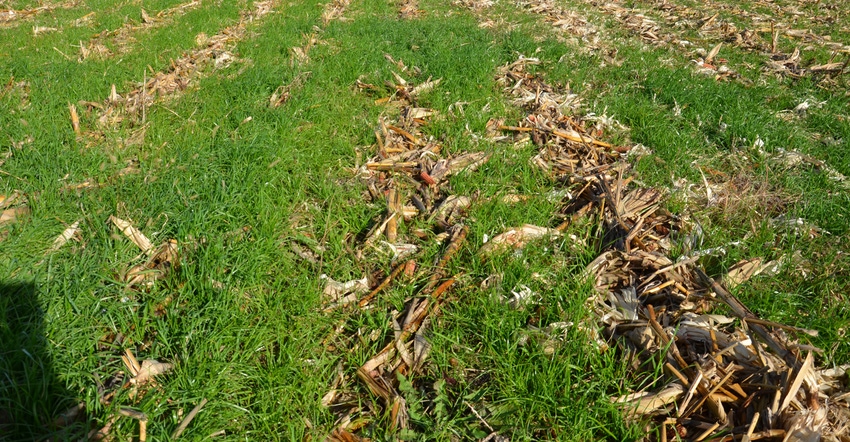
Nitrogen that leaves farm fields in much of the Midwest, particularly if it reaches waterways that feed the Mississippi River, winds up in the Gulf of Mexico. Dennis Bowman says this nitrogen is being blamed for hypoxia problems in the gulf that affect fish populations and overall plant and animal health.
Bowman, an Extension educator for commercial agriculture at the University of Illinois, recently visited with farmers on both sides of the Indiana-Illinois line, asking them to consider practices that will help reduce the amount of nitrogen leaving farm fields and winding up in the gulf.
Laura Christianson, a U of I crop researcher, led a team of experts who prepared a report called "10 Ways to Reduce Nitrogen Loads From Drained Croplands in the Midwest." Jane Frankenberger, Purdue University Ag and Biological Engineering Department, contributed to the study, along with specialists from South Dakota, Iowa and Minnesota.
Three practices in the report involve keeping nitrates in the plant zone where they can feed plants, Bowman explains. Here they are:
1. Improve overall management of nitrogen. “This basically boils down to the 4 R’s,” Bowman says. “Apply the right source at the right rate at the right time in the right place.”
Rate of application has a greater influence on drainage-water nitrate loss than any other N management factor, including timing, placing or use of nitrification inhibitors, Christianson says.
Spring application typically results in less potential for loss than fall application, and the amount of N applied in the fall has fallen off, Bowman observes. Spring timing vs. fall application tends to be most effective at reducing loss in drainage water during wetter winters and springs.
2. Use cover crops to help tie up nitrogen and reduce N losses. If you think you don’t need cover crops because you farm relatively flat land, you may not be considering the right benefit that cover crops can provide. Besides covering the soil and preventing soil erosion, they can also help reduce nitrogen losses from the field. “Cover crops can slow the loss of nitrogen by about 30%,” Bowman says.
According to Christianson’s work, there is a wide range in published studies as to how much cover crops can reduce N losses — from 13% to over 90%.
The bottom line is that cover crops can reduce losses by a significant amount, Bowman says.
Why do cover crops work so effectively at keeping nitrates out of tile water? They actively take up water and nitrates since they’re growing at a time when the field would otherwise be vulnerable to N losses, Bowman explains.
3. Increase use of perennial crops. The number of people willing to put a perennial crop like alfalfa back into the rotation may be limited, but if you can, there is a marked benefit in reduced N loss, Bowman says. Perennial crops have extended growing seasons compared to row crops. That means they are taking up water and nutrients during more months of the year, leaving less time for nutrients to escape from the field.
About the Author(s)
You May Also Like




